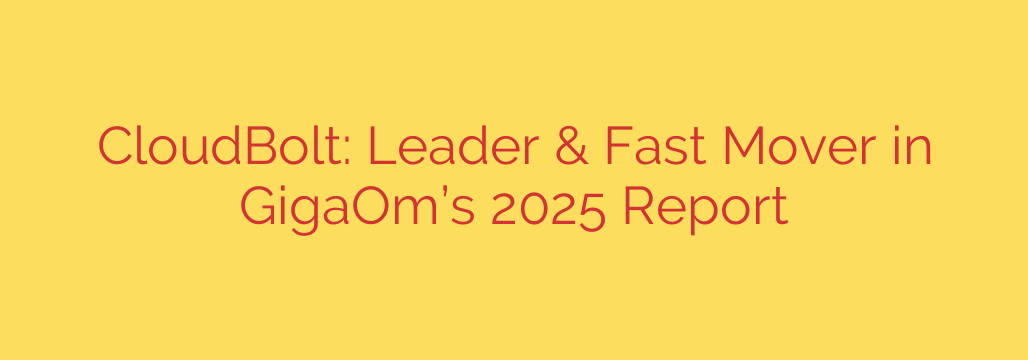
Unlocking True Cloud Value: The Essential Features of a Leading Cloud Management Platform
As organizations increasingly embrace hybrid and multi-cloud strategies, the initial promise of flexibility and innovation can quickly become overshadowed by complexity, cost overruns, and security gaps. Managing disparate environments, each with its own set of tools and cost structures, is a significant challenge. The solution lies not in scaling back cloud ambitions, but in adopting a powerful, centralized Cloud Management Platform (CMP) to restore order and unlock strategic value.
But what separates a truly effective CMP from the rest? Leading platforms are defined by their ability to deliver comprehensive control and insight across four critical pillars: cost optimization, automation, security, and integration. An exceptional solution not only masters these areas but also demonstrates rapid innovation to meet future challenges head-on.
1. Mastering Cloud Costs with Integrated FinOps
One of the most pressing challenges in a multi-cloud world is controlling spend. Without a unified view, costs can spiral out of control, eroding the financial benefits of the cloud. A top-tier CMP moves beyond simple reporting and embeds deep FinOps capabilities directly into its framework.
This includes:
- Complete Visibility: Providing a single, granular view of spending across all cloud providers and on-premises systems.
- Actionable Cost Optimization: Automatically identifying idle resources, recommending rightsizing for virtual machines, and suggesting more cost-effective instance types.
- Financial Accountability: Enabling clear showback and chargeback to business units, fostering a culture of cost-consciousness throughout the organization.
By transforming financial data into actionable intelligence, a leading CMP helps businesses make smarter decisions and significantly improve their cloud return on investment.
2. Driving Efficiency Through Powerful Automation and Orchestration
Manual provisioning and repetitive IT tasks are a major drain on resources, slowing down innovation and increasing the risk of human error. The goal of a modern cloud strategy is to empower developers and business users with self-service capabilities while maintaining control.
A superior CMP achieves this through a sophisticated automation and orchestration engine. This allows IT teams to:
- Build Self-Service Portals: Offer a curated catalog of pre-approved cloud services and applications that users can deploy on-demand.
- Automate Complex Workflows: Create automated processes for everything from provisioning and configuration to decommissioning resources, ensuring consistency and compliance.
- Reduce IT Toil: Free up skilled engineers from routine administrative work so they can focus on high-value strategic initiatives.
This level of automation accelerates project timelines, enhances operational efficiency, and ensures that all deployed resources adhere to company standards from day one.
3. Enforcing Robust Security and Governance
As cloud environments expand, so does the attack surface. Maintaining a consistent security posture and ensuring compliance across multiple clouds is impossible without centralized governance. An elite CMP acts as a crucial control plane for risk management.
Key features include:
- Proactive Policy Enforcement: Defining and automatically enforcing security and compliance policies across all cloud environments to prevent misconfigurations before they happen.
- Continuous Compliance Monitoring: Constantly scanning for deviations from established baselines (such as CIS benchmarks or internal standards) and providing dashboards for audits.
- Automated Remediation: Not just identifying security issues, but automatically fixing them based on predefined rules, drastically reducing the window of vulnerability.
This creates a secure framework where agility and governance are not mutually exclusive, but work hand-in-hand.
4. Unifying Operations with Seamless Integration
The very nature of a hybrid, multi-cloud strategy demands a platform that can connect to everything. A leading CMP must serve as a central hub, providing a true “single pane of glass” for all cloud and on-premises infrastructure. This requires extensive and extensible integration capabilities.
A platform with a strong integration framework can connect seamlessly with:
- Public cloud providers like AWS, Microsoft Azure, and Google Cloud Platform.
- Private cloud technologies such as VMware.
- Third-party tools for monitoring, security (SIEM), and IT Service Management (ITSM) like ServiceNow.
This holistic view breaks down silos, simplifies management, and provides the comprehensive oversight needed to run a modern enterprise IT ecosystem effectively.
How to Choose a Winning Cloud Management Solution
When evaluating a CMP, look beyond a simple checklist of features. The market is dynamic, and the right partner is one that is both established and forward-thinking.
Prioritize platforms with a proven track record and a strong market position. These solutions have been battle-tested in complex enterprise environments and offer the stability and comprehensive feature set necessary for mission-critical operations.
Equally important, evaluate the platform’s pace of innovation. The cloud landscape is constantly evolving with technologies like GenAI and serverless computing. Choose a provider that demonstrates a clear vision and a rapid development trajectory, ensuring your investment is future-proof and will continue to deliver value for years to come. By focusing on these core capabilities and the vendor’s momentum, you can select a platform that will truly transform your cloud operations from a complex cost center into a powerful engine for business growth.
Source: https://datacenternews.asia/story/cloudbolt-named-leader-fast-mover-in-2025-gigaom-report








